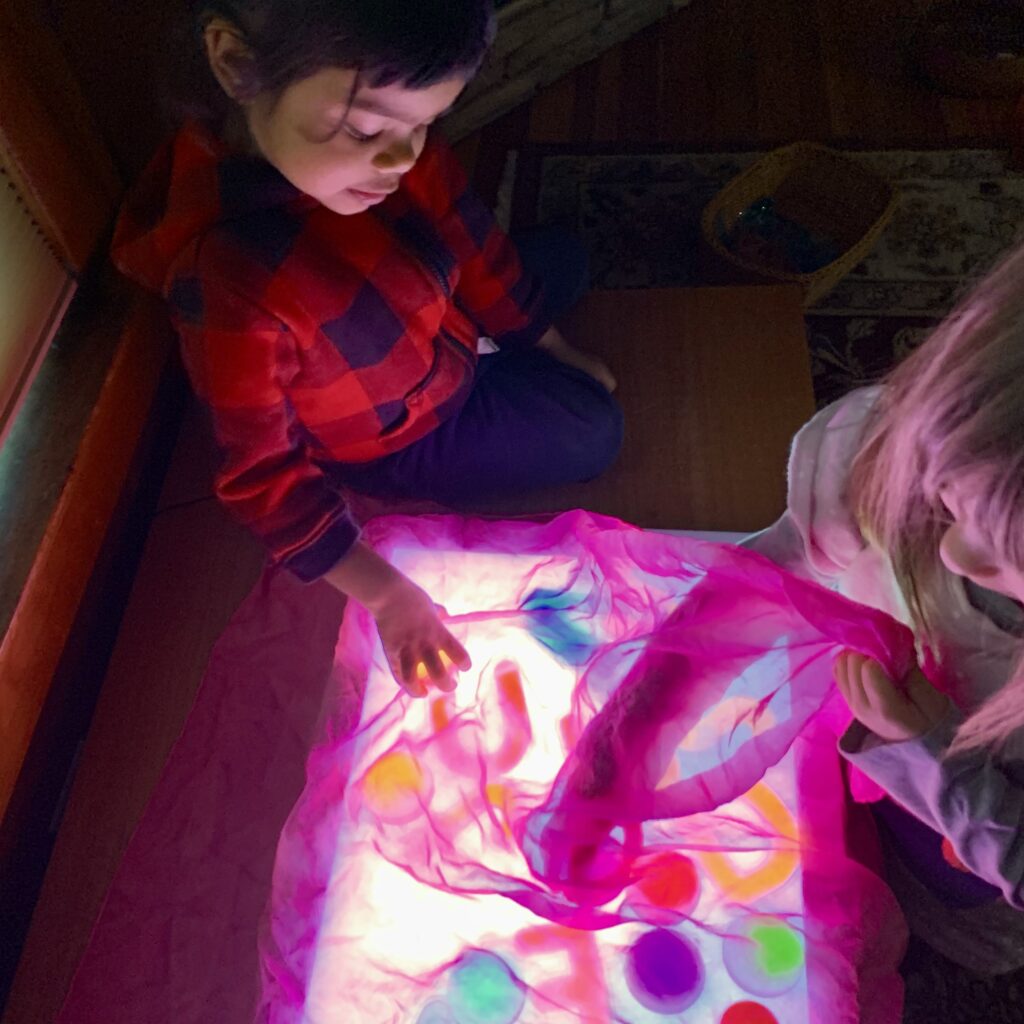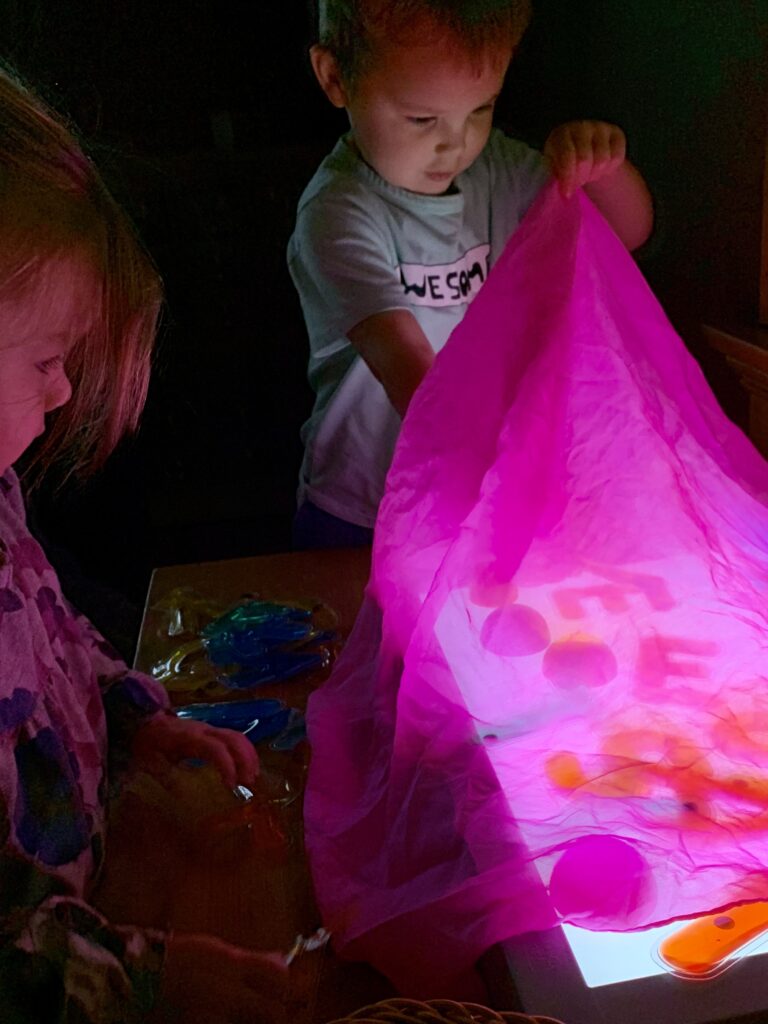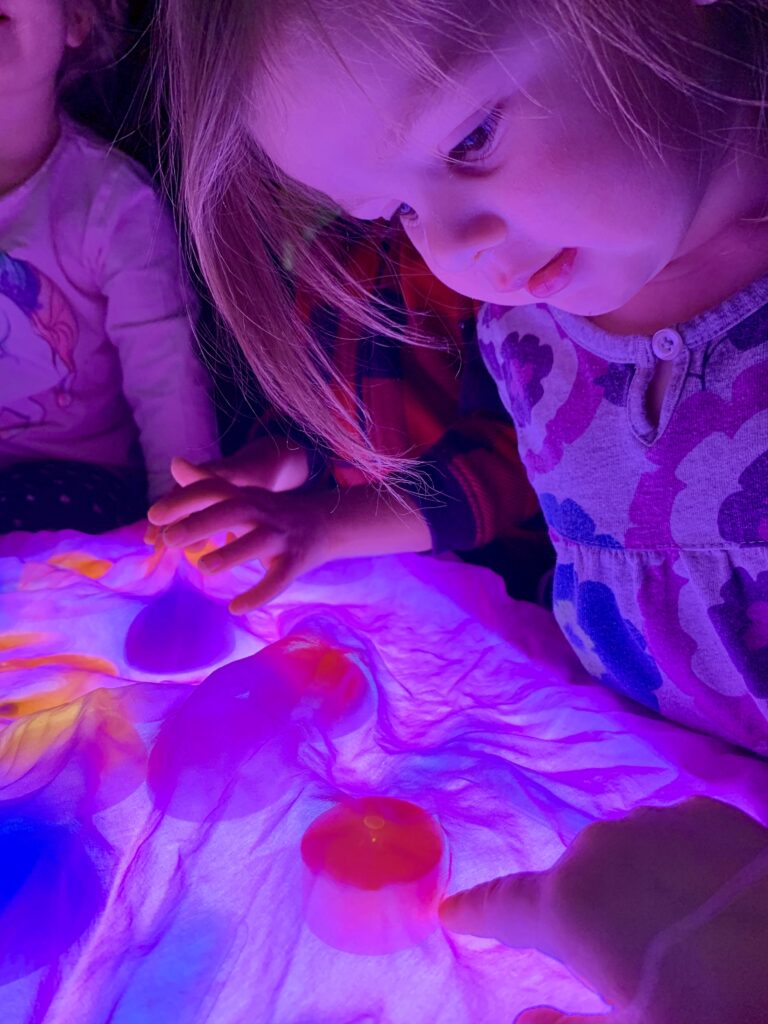Shine a Light

“Saaliha, come with me to the light table,” Evelyn whispers. “I have to show you something!”
Hand in hand, the two preschoolers quietly make their way over to our light table. This darkened corner of our classroom never fails to mesmerize the children with its soft glow and luminous colors.
As the days grow shorter and darker—and the hectic holiday season approaches—it’s the perfect time to engage children in calming investigative play with light and color.
Before we gather around the light table, I dim the lights in the classroom and put on some soft music to create a soothing and tranquil setting for the children, who are often overscheduled, tired and anxious during these busy December days.
“Look!” says Evelyn. “I took a play silk from our dress-up bin and put it on the light table!”
Evelyn moves over to make room for Saaliha at the light table and the two friends immerse themselves in STEAM collaboration, problem-solving and investigation. The girls are completely absorbed in their play—and the learning is enhanced by the presence of a friend and collaborator.

“That’s cool!” says Saaliha. “It makes everything look a little different, but you can still see all of the different colors!”
The light table allows for open-ended play, where children can experiment and create without strict guidelines. This type of play fosters the development of creativity and problem-solving skills as the children follow their curiosity, devise their own experiments and draw their own conclusions. This child-led play also fosters an investigative mindset, which can lead to hours of exploration and discovery.
“Try this!” Evelyn suggests as she shows Saaliha how to duck under the silk to compare the views.
The girls experiment with different color combinations and share their theories and discoveries. The light table always seems to spark curiosity and encourages children to ask questions and seek answers.

As more children join the investigative play, they expand their knowledge base by collecting data and adding probability to their investigative skills.
This is a shared space that encourages collaborative investigations. Collaboration fosters communication skills, teamwork and the ability to share ideas with peers.
Children work together to create patterns, build structures and explore different materials—a process that helps foster the development verbal and social skills.

The hands-on nature of these activities promotes a deeper understanding of mathematical principles through play.
Children can investigate fundamental mathematical concepts such as counting, sorting, patterns and shapes on the light table.
These long play periods extend the learning as the group explores spatial relationships, patterns and sequencing, laying a foundation for more advanced mathematical thinking.

Play at the light table is naturally enjoyable for young children. The combination of vibrant colors, interactive materials and the freedom to explore creates a positive and joyful learning experience that can contribute to a lifelong love of learning.
Light tables allow children to learn at their own pace, which makes the play developmentally appropriate for every early learner. The children build on their own knowledge and share their observations with others.
When children are making observations and discoveries, they are forming and testing hypotheses. These self-directed learning experiences empower them to continue to explore and investigate beyond the classroom.
So turn on that light table and watch the magic of play and discovery brighten the day!
this is such a fun way to learn about lights and colors! very cute for christmas
The activities of the light exploration look fun and interesting for children.
There are so many fun ways to use the light table. Kids love it! I like the size of the light table you have available to your children.
I have to try this with my young and older infant!
The children were very engaged. Interesting that they brought in the silk.
I love the light table. Children always get excited to explore using the light table.
Light tables are an exciting way to change up regular play.
love to use the light table